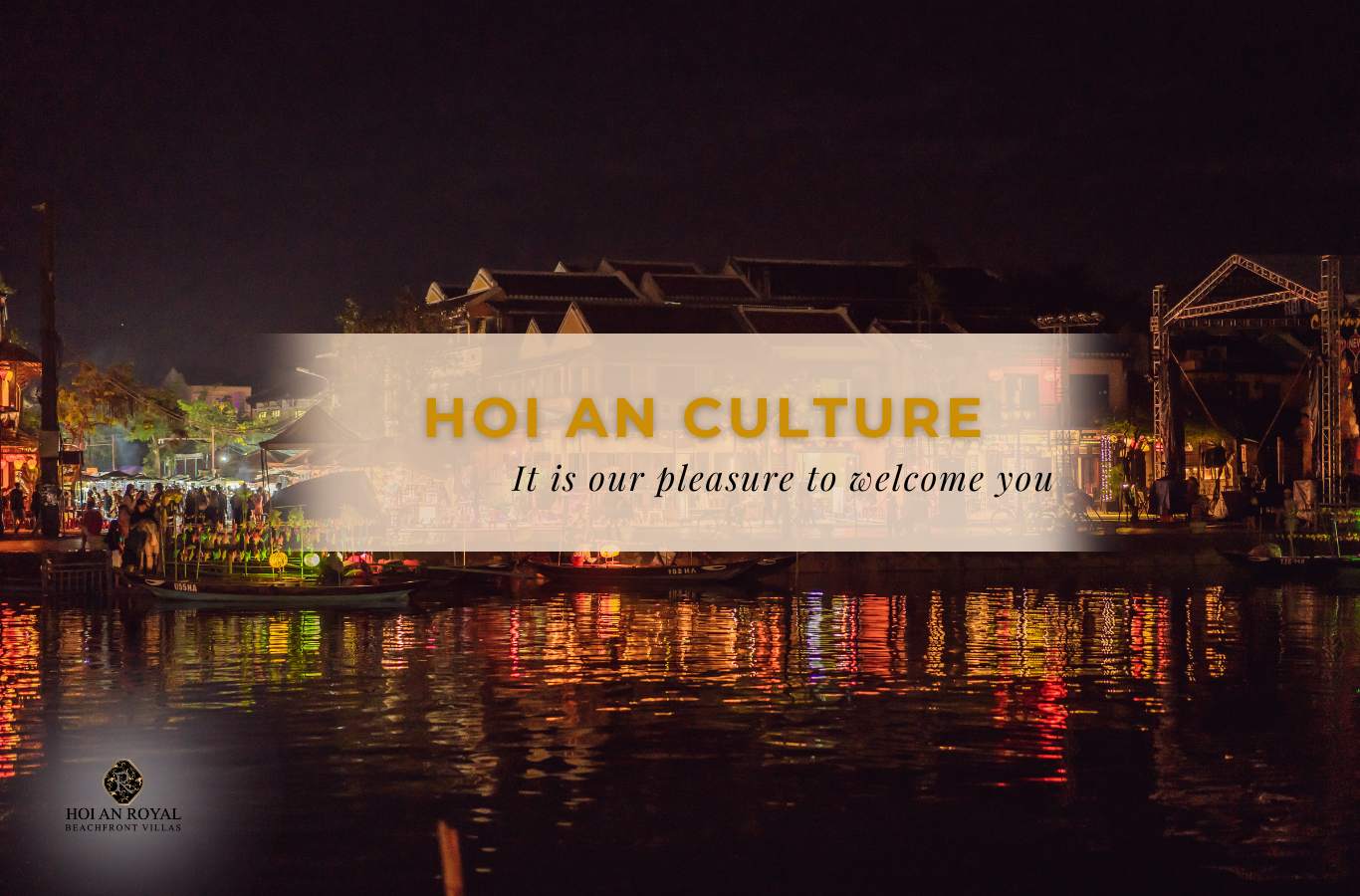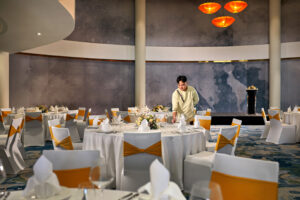Hoi An culture is a wonderful blend of tradition and modernity, creating a uniquely special atmosphere that captivates every visitor. From vibrant festivals to signature dishes, every corner of this town tells a story of the past. Join Hoi An Royal Beachfront Villas to discover the unique features of Hoi An culture in the article below!
Table of Contents
ToggleThe unique cultural intersections in Hoi An
Hoi An is a refined convergence of ancient and Eastern cultures, creating a colorful and rich cultural mosaic.
The Combination of Ancient Cultures
Hoi An culture is a microcosm of three ancient civilizations that once thrived in Central Vietnam, deeply illustrating the length and depth of Hoi An history through different periods
- Sa Huynh Culture: This prehistoric culture, dating back to around 1000 BCE, has left clear traces through artifacts such as jar burials, tools, and jewelry discovered at sites like Hau Xa, Thanh Chiem, and Bai Ong (Cu Lao Cham). These findings prove that Hoi An had early inhabitants and a well-developed culture, laying the foundation for its later cultural diversity.
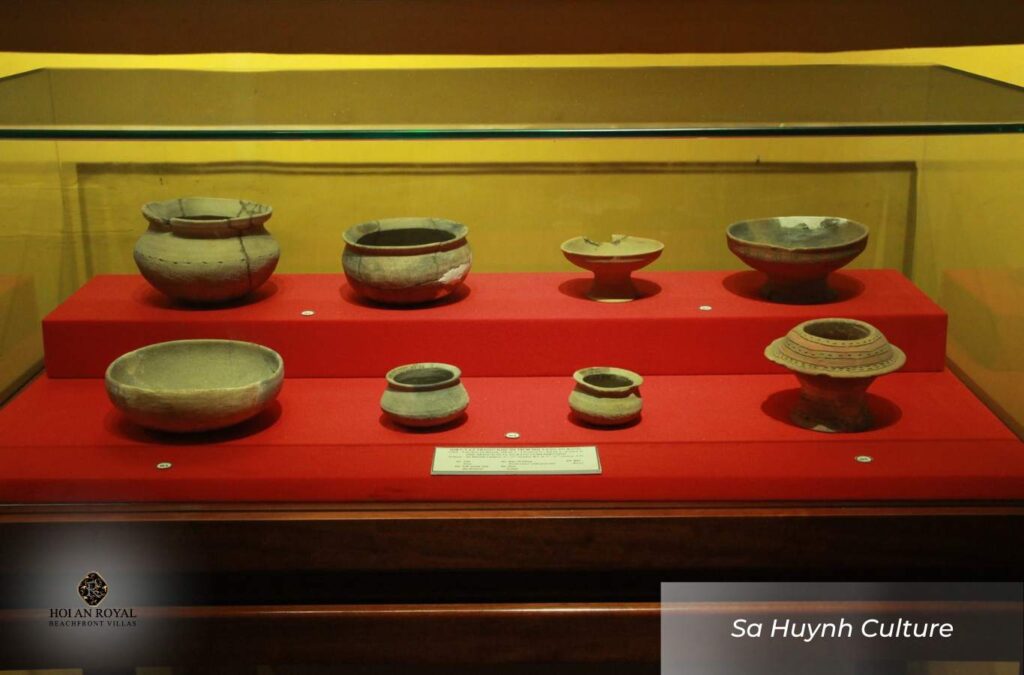
- Champa Culture: Before becoming part of Dai Viet, Hoi An belonged to the ancient Champa kingdom. Its influence is still visible through architectural relics such as Champa wells, statues of the Kubera god, elephant deities, and ceramic artifacts, all reflecting the vibrant commercial era of the port city of Lam Ap over many centuries.
- Dai Viet Culture: From the 15th century onward, when Dai Viet took over the region, its culture significantly influenced Hoi An’s architecture, customs, and daily life. Traditional craft villages and ancient houses with Vietnamese architectural styles are clear evidence of this legacy.
Eastern cultural Fusion in Hoi An
Hoi An is renowned for the seamless blending of three Eastern cultures: Chinese, Japanese, and Vietnamese:
- Chinese Culture: The Fujian Chinese were the first merchants to arrive in Hoi An, leaving strong marks on its architecture and cuisine. Assembly halls such as Phuc Kien, Trieu Chau, and Quang Dong still stand intact, representing distinct Chinese architectural styles. Hoi An’s cuisine blends local ingredients with traditional techniques, creating distinctive dishes full of historical flavor.
- Japanese Culture: Japanese merchants since the late 16th century contributed a unique cultural touch to Hoi An. The most symbolic structure is the Japanese Bridge (Chua Cau) and the tombs of Japanese merchants, which illustrate the deep cultural and commercial exchange between the two lands.
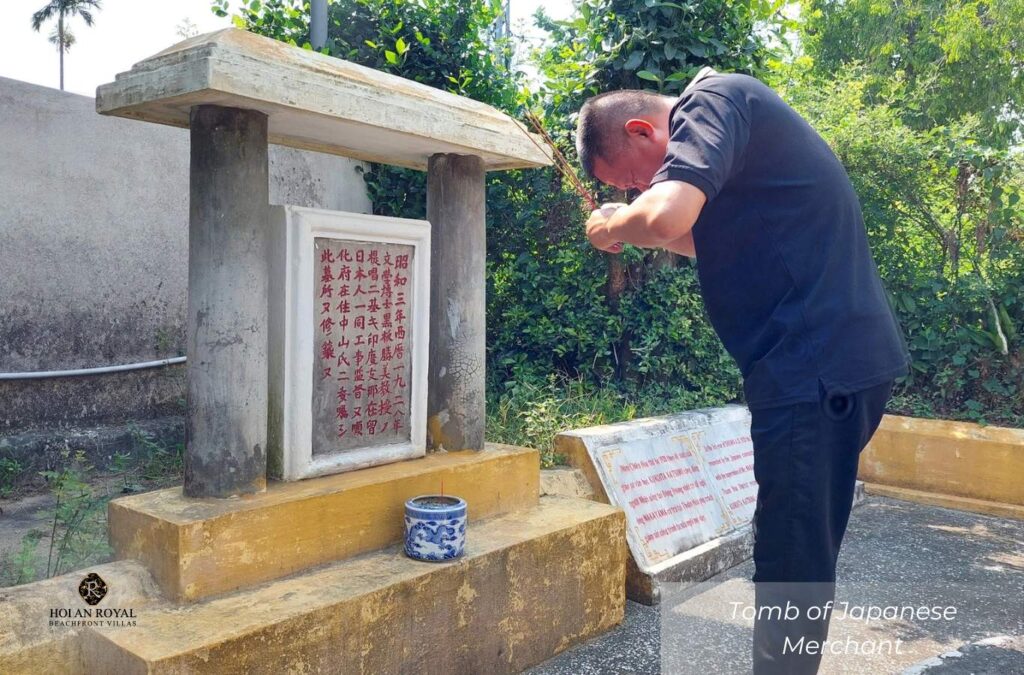
- Vietnamese Culture: Hoi An residents have preserved their traditional architecture and simple lifestyle, seen in ancient houses and their close, friendly way of communication.
Traditional culinary culture in Hoi An
Hoi An cuisine harmonizes local ingredients with traditional techniques, resulting in distinctive dishes rich in historical flavor.
Signature dishes of traditional Hoi An cuisine:
- Cao lau: This is the most iconic noodle dish of Hoi An, featuring chewy noodles, rich pork-bone broth, fresh herbs, and crispy bread. Cao lau is a culinary symbol of the ancient town, reflecting the fusion of local ingredients and traditional cooking techniques.
- Mi Quang: Mi Quang Hoi An is famous for its soft, chewy noodles and creamy broth made from pork bones. It often includes pork, shrimp, boiled egg, peanuts, and grilled rice crackers. There is also a variation with frog, offering a richer and more distinctive flavor.
- Stir-fried Mussels with Rice Crackers: This specialty features fresh mussels stir-fried with spices, Vietnamese coriander, onion, fried shallots, peanuts, and chili sauce, served with sesame rice crackers or crispy banh dap. The dish is known for its bold, savory flavor, affordable price, and popularity as a street snack in Hoi An.
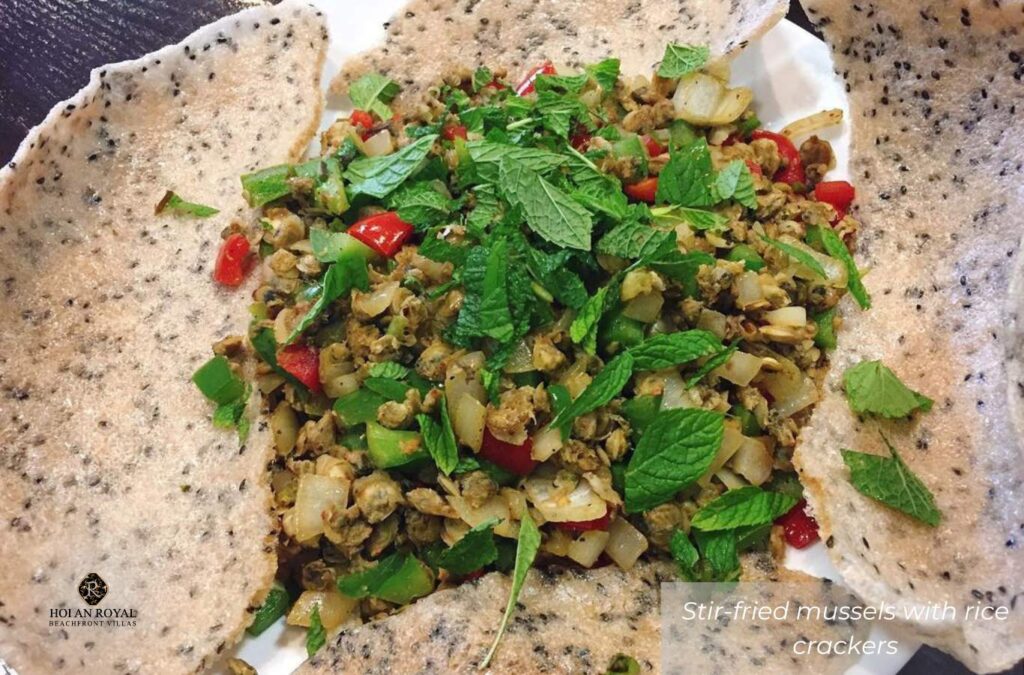
- Com hen: This dish uses fresh mussels caught from the Hoai River, served with raw vegetables such as banana blossom, pineapple, and taro stem, accompanied by a sweet mussel broth. Com hen offers a fresh, savory taste that stands out from similar dishes in other regions.
- Banh beo, banh vac: These are traditional rice cakes with thin wrappers filled with shrimp, pork, or sweet fillings. They are carefully wrapped and elegantly presented, showcasing the meticulous culinary style of Hoi An.
- Traditional sweet soups: Che dau do, che hat sen, che xi ma, che ngo, and che me den are common desserts with refreshing, nutritious flavors and detailed preparation, suited to the different seasons of the year.
And many more dishes, each carrying the unique essence of this land, leaving visitors with unforgettable memories of their distinctive flavors.
Exploring religious and spiritual culture in Hoi An
The religious and spiritual culture in Hoi An reflects the diversity and harmony among various belief systems, creating a rich picture of the local people’s spiritual life.
Diversity of religions and beliefs
Hoi An is home to many coexisting religions such as Buddhism, Roman Catholicism, Protestantism, Cao Dai, Mendicant Buddhism, and Theravada Buddhism. Among these, Buddhism is the most prevalent and has a profound influence on the spiritual life of the people.
Many families, even those not formally following Buddhism, still worship Buddha and observe vegetarian practices on the 1st and 15th days of the lunar month.
The ancestral worship belief and the Five-household Deity Altar
In addition to ancestor worship, the people of Hoi An maintain the tradition of the Five-generation ancestral house – a worship system for five deities believed to govern the family’s destiny. These include the Kitchen God, Gate God, Well God, Ancestral Patron Deity, and Celestial Empress.
The altar of the Five-generation ancestral house is typically placed with reverence at the center of the home, above the main ancestral altar. This reflects deep-rooted belief in the protection and divine arrangement offered by these deities in everyday family life.
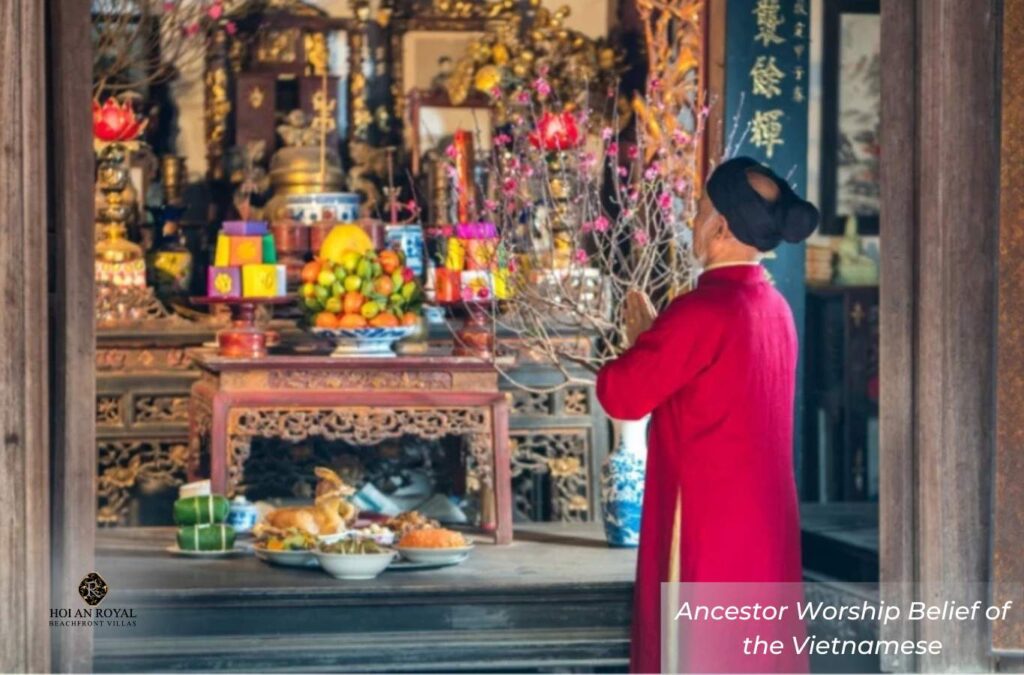
Worship of Quan Cong
A distinctive feature of spiritual life in Hoi An is the worship of Quan Cong, a deity symbolizing loyalty, righteousness, and the safeguarding of peace for both families and the broader community.
The Quan Cong temple, located in the heart of the ancient town, is enveloped in incense all year round, becoming a sacred spiritual landmark. In many homes, Quan Cong is revered as a guardian spirit, often accompanied by statues or portraits of Quan Cong, Quan Binh, and Chau Thuong.
Other forms of folk beliefs
Hoi An is also home to many folk beliefs, such as worshipping ba Co, ong Manh, protective amulets, and thach cam duong stones. These practices highlight the spiritual richness and cultural depth of the local community.
What makes the people of Hoi An so special?
What makes the people of Hoi An truly special is the harmony between deep cultural traditions and a simple, genuine, and hospitable lifestyle, forming a distinctive identity unlike anywhere else.
- Love and respect for heritage: The people of Hoi An are always proud of, care for, and preserve the ancient town as a precious heritage passed down from their ancestors. They not only maintain the architecture but also uphold the lifestyle and gentle, elegant character, steering clear of chaotic and noisy ways of living. The symbol of the “eye on the door”, placed on every house, holds both protective meaning and a reminder to live kindly and civilly.
- A graceful, unhurried way of life: Hoi An people do not eat hastily, speak loudly, or walk in a rush. They live affectionately, harmoniously, and close to nature. They enjoy sitting on their verandas reading books, playing chess, tending to bonsai trees, and chatting warmly with each other, creating a peaceful and cozy living space.
- Sincerity and hospitality: Whether traders or intellectuals, Hoi An residents are known for their honest, courteous, and cultured manner. Tourists often feel a sense of friendliness and familiarity from the very first encounter. In commercial exchanges, even when a sale isn’t made, visitors are still greeted with genuine smiles and invited to return.
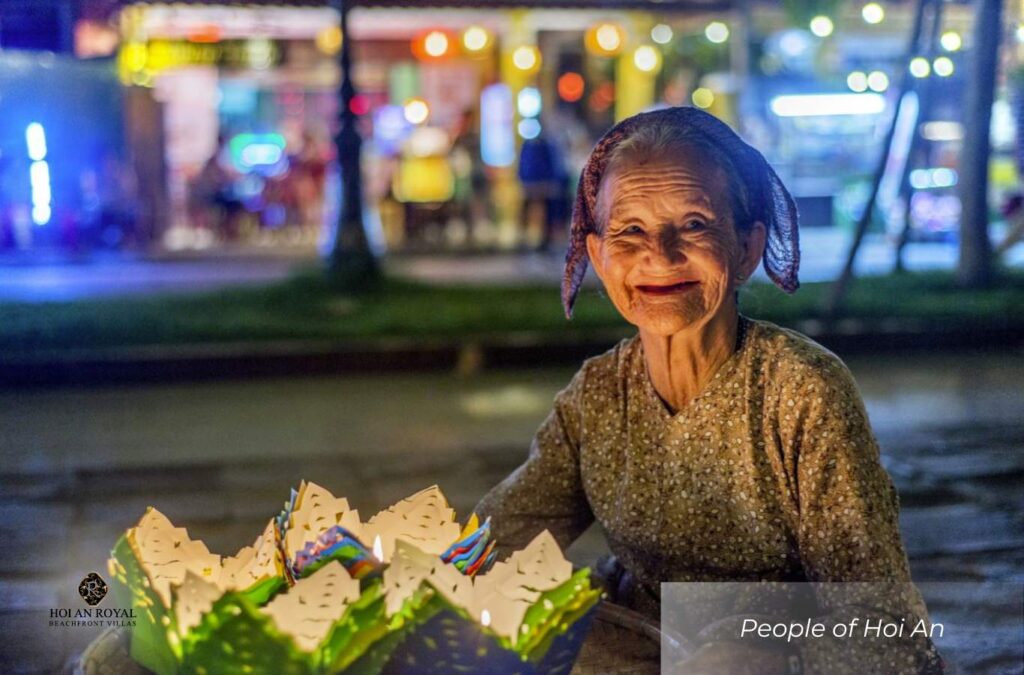
- Harmony within the community: Hoi An does not exhibit contrast between front and back spaces; instead, the streets and corners are seamlessly connected, fostering peace, harmony, and serenity among people. Residents live on nearly equal social levels, without flaunting wealth, reflecting equality and simplicity in daily life.
- Preserving cultural traditions: Hoi An people maintain traditional cultural values such as đờn ca tài tử, bài chòi singing, bonsai cultivation, and bird keeping, enriching their spiritual lives with elegance. Even the younger generations retain simplicity and avoid showy trends, helping to preserve the unique identity of the ancient town.
Hoi An and its traditional festivals rich in national identity
Hoi An is not only captivating for its ancient charm but also stands out for its vibrant cultural life. Traditional festivals are a lively expression of spiritual beliefs, community customs, and the deep connection between people, nature, history, and their ancestors.
The Lantern Festival Hoi An is a cultural icon of Hoi An. Held on the 14th day of each lunar month, the festival transforms the old town into a magical space illuminated by thousands of colorful lanterns and floating paper lights on the Hoai River, accompanied by vibrant folk performances.
Tet Nguyen Tieu, celebrated in the first lunar month, is an occasion for people to pray for peace, ward off misfortunes, and express hopes for a good year. Ceremonies are solemnly conducted in temples and pagodas, blending spirituality with a festive community spirit.
For Hoi An’s fishing communities, the Whale Festival in the third lunar month is the most sacred event of the year. Fishermen express their gratitude to Nam Hai—the sea god protector. The traditional rituals such as the boat procession and ceremonial offerings highlight their faith and deep connection to the sea.
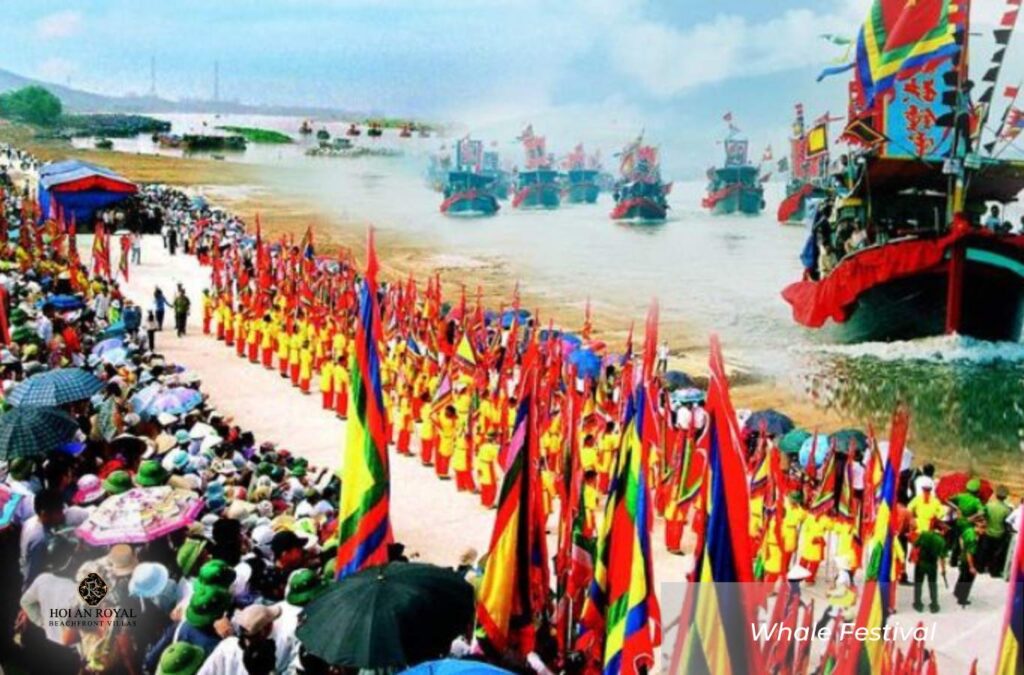
Continuing the series of spiritually rooted festivals is the Long Chu Procession, held on the 15th day of the first and seventh lunar months. During this event, villagers carry a dragon boat model around the village to ward off evil spirits. The sound of firecrackers, drums, and gongs creates a sacred yet festive atmosphere.
At Tra Que vegetable village, the Cau Bong Festival on the 7th day of the first lunar month honors the founding spirit of agriculture. The festival prays for lush crops and a bountiful harvest. Visitors during this time can take part in farming activities like planting and harvesting, offering a lively, hands-on experience of local craft culture.
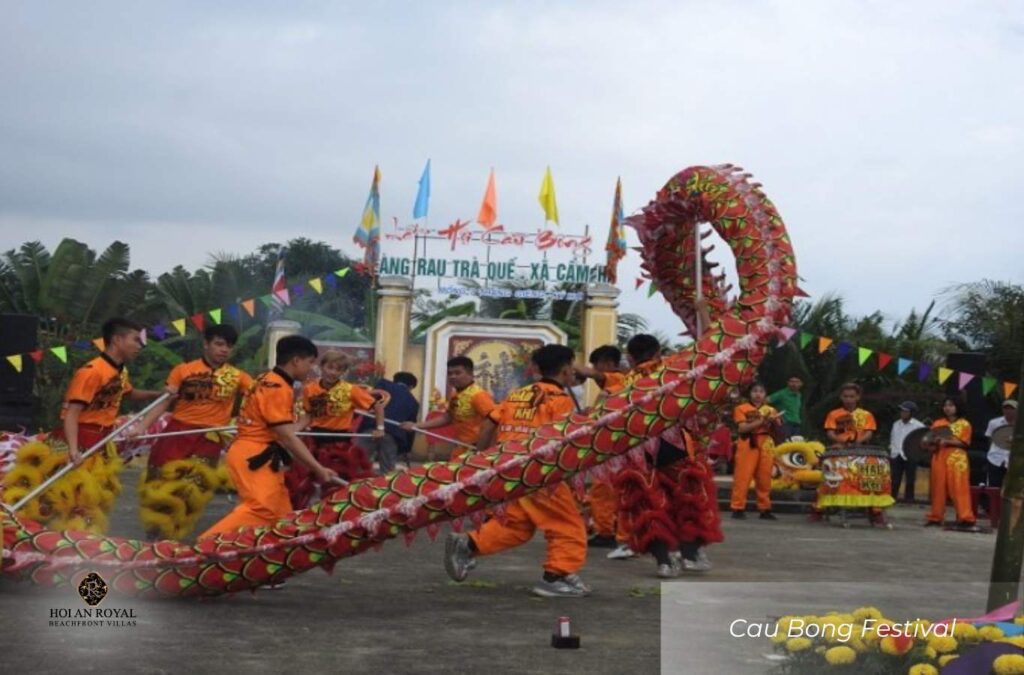
Each festival in Hoi An is a vivid reflection of the local way of life. They not only showcase faith and tradition but also express a strong sense of community, helping to preserve heritage and promote sustainable cultural tourism for the ancient town.The culture of Hoi An is not only seen through its architecture, festivals, or signature cuisine, but also reflected in the soul of its people. Hoi An Royal Beachfront Villas believes that it is precisely the preservation and promotion of these cultural values that have helped Hoi An retain its unique charm, captivating travelers from all over the world.
